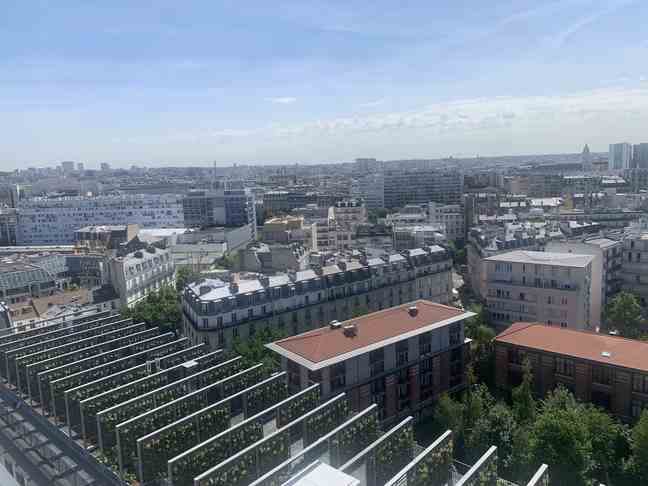It was a forgotten district of Paris. Between the tumult of Bastille and the Marais, the Sully-Morland district, in the 4th arrondissement, has been living in slow motion for a few years. Largely occupied by the apartments of the Republican Guard, boulevard Henri-IV, the Arsenal has been emptied of its inhabitants and its businesses. It was without counting the arrival of a very particular building installed in the place of the old administrative city.
His name is Morland Mixed Capital and was designed by the real estate developer Emerige, in collaboration with several big names in architecture such as David Chipperfield or Jean-Philippe Le Bœuf, from the Calq studio. So during its inauguration this Tuesday morning, there was enough to breathe after “these years of work”, put forward by Laurent Dumas, chairman of the supervisory board of Emerige. You have to go back to 2015 to discover the genesis of the project, presented during the call for projects “Reinventing Paris”, organized by the City. The following year, the award falls and Morland Mixité Capitale is finally one of the 23 winning sites selected by Anne Hidalgo, “the greatest” we rejoice among the architects. There is reason, because the building-district now extends over nearly 44,000 square meters and overlooks the Seine from the top of its 50 meters.
A double mix
But beyond its impressive size, it is the modernity that strikes the visitor on discovering this building clad entirely in glass. In addition to its massive arch which seems to bear the weight of the 16 floors, the challenge of modernity is also reflected in the building’s social and environmental issues.
Social, because the place wants to be the symbol of urban diversity. This is combined by the installation of eleven different uses in the same building. There are all forms of housing (200 in all!) at the same time social, intermediate or private. “That’s social diversity, it’s when you don’t necessarily have the same income in a building”, rejoices the mayor of Paris Center, Ariel Weil, who also highlights “the diversity of uses” . Because throughout the building mixes different uses of space: a youth hostel for small budgets, as well as a five-star hotel. Even more original, Morland Mixité Habitat offers a fitness club and swimming pool, bars and restaurants, offices, an art gallery, a crèche and even a food market. “A considerable project”, summarizes Laurent Dumas.
Rebuild, rather than destroy
The word is well chosen, because behind this holiday village atmosphere, the building responds to a real ecological challenge: the rehabilitation of an old building that no longer had a good image in the neighborhood. “Investors often say that it is better to remove than to rebuild,” smiles architect David Chipperfield, who prefers to deny the allegation outright. “The result shows that our vision of re-adapting and mixing was the right one. But the ecological challenge does not stop there. Eco-responsibility is also reflected in the installation of 2,800 m2 of urban agriculture on the roofs of the building. The 150 plant varieties are not just for decoration, however. “They also make it possible to treat the building’s waste water”, emphasizes the Calq agency.

But you have to climb to the 15th and 16th floors to discover what this building undoubtedly has best to offer: a panoramic and spectacular view of the historic monuments of Paris. On one side, Île Saint-Louis and Notre-Dame. On the other, the Bastille and Père-Lachaise. But there too, nothing was chosen at random. The roof was designed in the form of a kaleidoscope with the installation of 32 windows that mix the view with the different perceptions visible in the windows. “The mirrored ceiling helps show off the reflections of the city’s activity and bustle,” adds Sebastian Behmann of Studio Other Spaces. A different vision of the city which is likely to bring many visitors fond of the mix between art and architecture. So much the better, because the building-district wants to be open to everyone and for everyone, not just its inhabitants.

